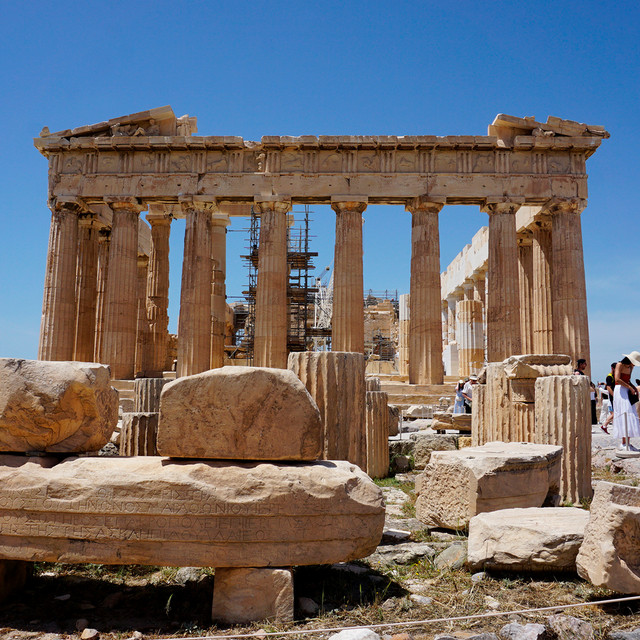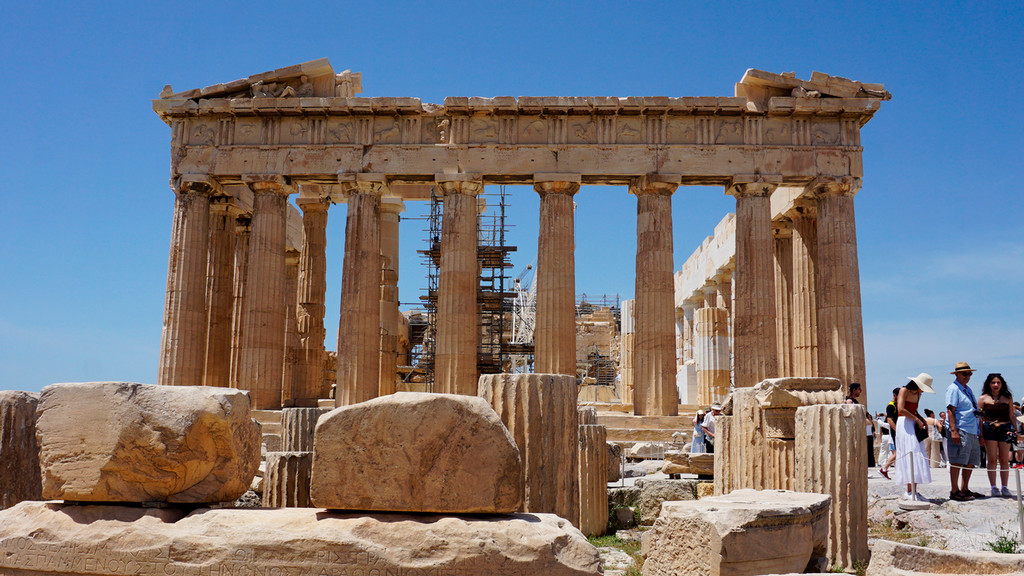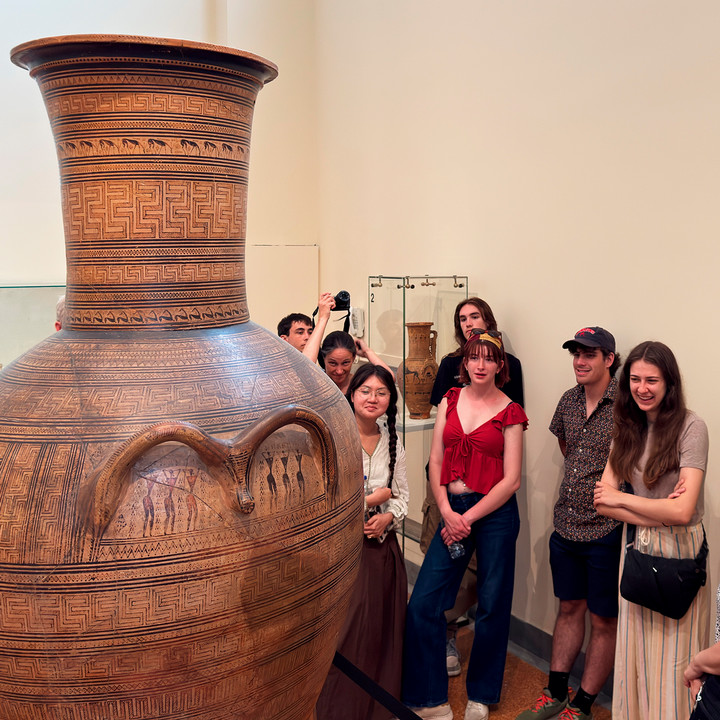Elizabeth Baughan and Jorge Wong Medina, both faculty in the classical studies department, traveled with 12 students and three other faculty members to Greece to study ancient history, archaeology, and language — and experience modern Greek culture. Here’s a collective recounting of some of the highlights.
Thursday, May 15
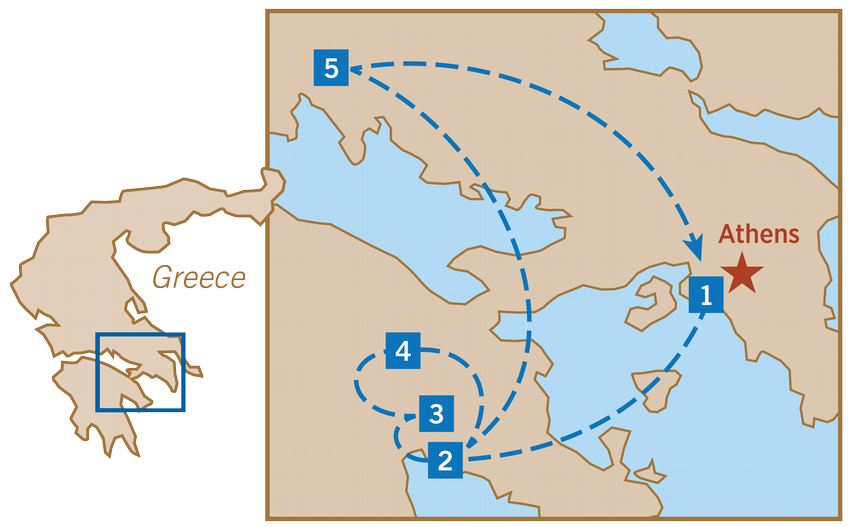
After convening in Boston for a pre-orientation dinner to reflect on our expectations for the trip, we arrive in Athens. For some of us, this is our first time flying on an airplane or visiting a country where English isn’t the primary language. The students are studying ancient Greek language and culture, and we’re all excited to see how the actual objects and places align with their imaginations.
Professor Elizabeth Baughan: “We went straight from the airport to Eleusis, and just like the initiates in the Eleusinian Mysteries, we arrived tired, hungry, dazed, and confused. Then we went to Corinth for lunch and explored the site and museum. This was a favorite for some of our students.”
Friday, May 16
Saturday, May 17
Sunday, May 18
Monday, May 19
Tuesday, May 20
Walking around the Oracle of Delphi, we’re struck by the grandeur and wealth. We know we’re experiencing only a fraction of the magic of what would have been here in antiquity. There’s an unmistakable message that this was a cultural and economic powerhouse.
Winston Cox, ’27: “I never considered that it might be so high up on a mountain. It made sense for such an inaccessible place to be considered sacred. It’s an example of how it was much easier for elites to access sacred and religious sites.”
We planned a stop in Thebes but skip it because the archaeological museum was closed. Instead, we have a great lunch outside Delphi and then go straight to Athens. After checking into our hotel, we enjoy a welcome drink and snacks on a nearby rooftop with views of the Acropolis.
Our dinner is a mix of typical Greek dishes: zucchini fritters and cheese croquettes, beef giouvetsi, oven-baked lamb, and vegetable ratatouille. Then, a couple of professional dancers demonstrate Greek folk dances and invite us to join in.

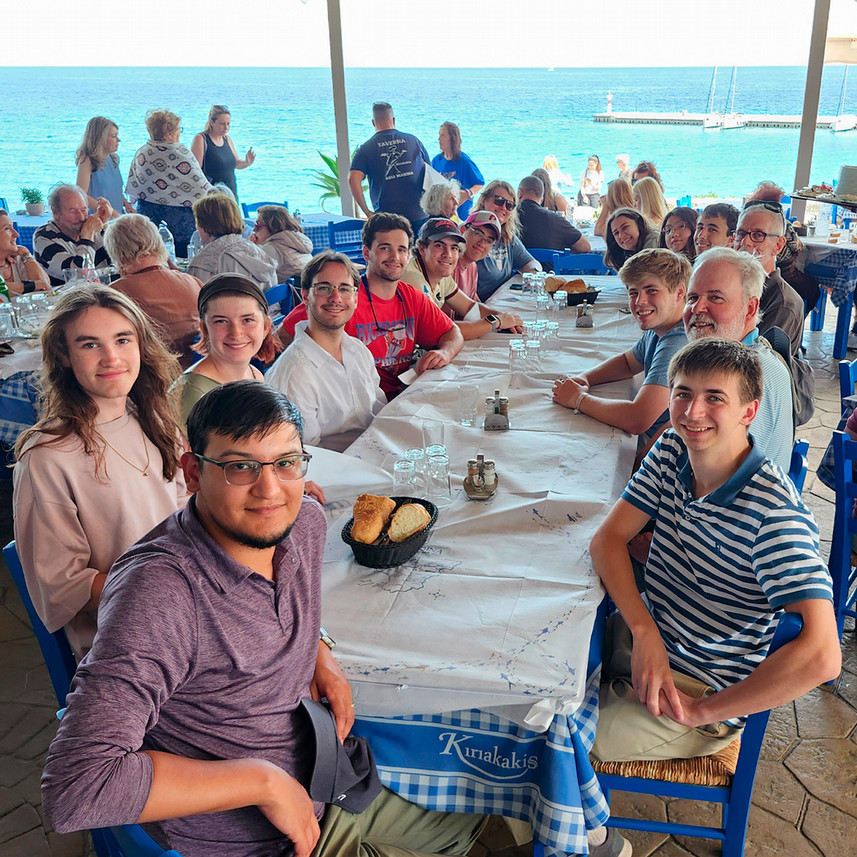
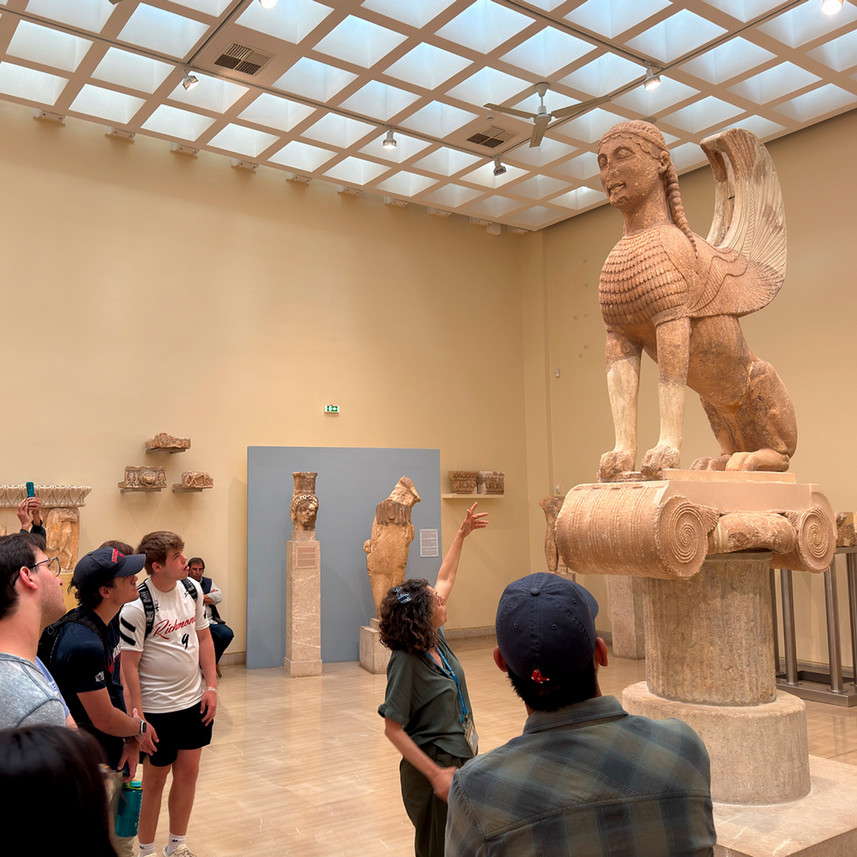
Wednesday, May 21
We see two sides of Athens. First, we meet with the director of excavations in Ancient Agora. He tells us about the view of the island of Salamis — where one of the first documented naval battles took place — from the entrance to the Acropolis, and how that informed the meaning of the buildings on the Acropolis. A few hours later, we’re standing at the Acropolis, looking back at Salamis, just as he described.
At the Acropolis Museum, we see ancient sculptures and inscriptions alongside casts of pieces that are currently in the British Museum in London. It starts a conversation about whether the objects should be returned.
Thursday, May 22
Baughan: “We walk over to the American School of Classical Studies for a guided tour with professors. Richmond is a member institution, which means our students can use the library here if they’re ever doing research in Athens on their own. We also want to familiarize them with this wonderful place in case they go on to graduate school or apply for a summer seminar program. If you study classics, you’re going to end up here one day.
“This visit was more of a highlight than I expected because the archivist has set out a table with things that might be of interest to us. They had papers from the collections of early archaeologists who excavated at Troy, Mycenae, and Pylos. I’ve seen digitized versions of their notebooks, but to flip through the paper volume was a real goosebumps moment for me.
“In another part of the archives, we saw one of the first printed editions of the Iliad, and we visited the school’s lab, which is one of the leading labs for archaeological science. We got a firsthand look at the work they’re doing with animal bones and human remains from excavations in Athens.”
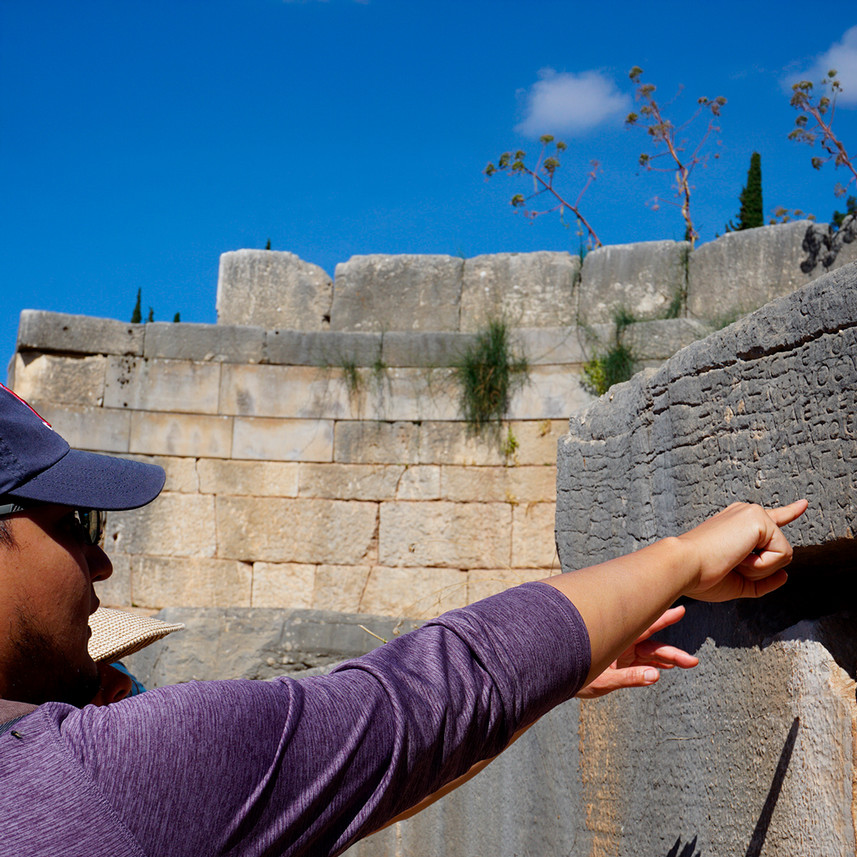
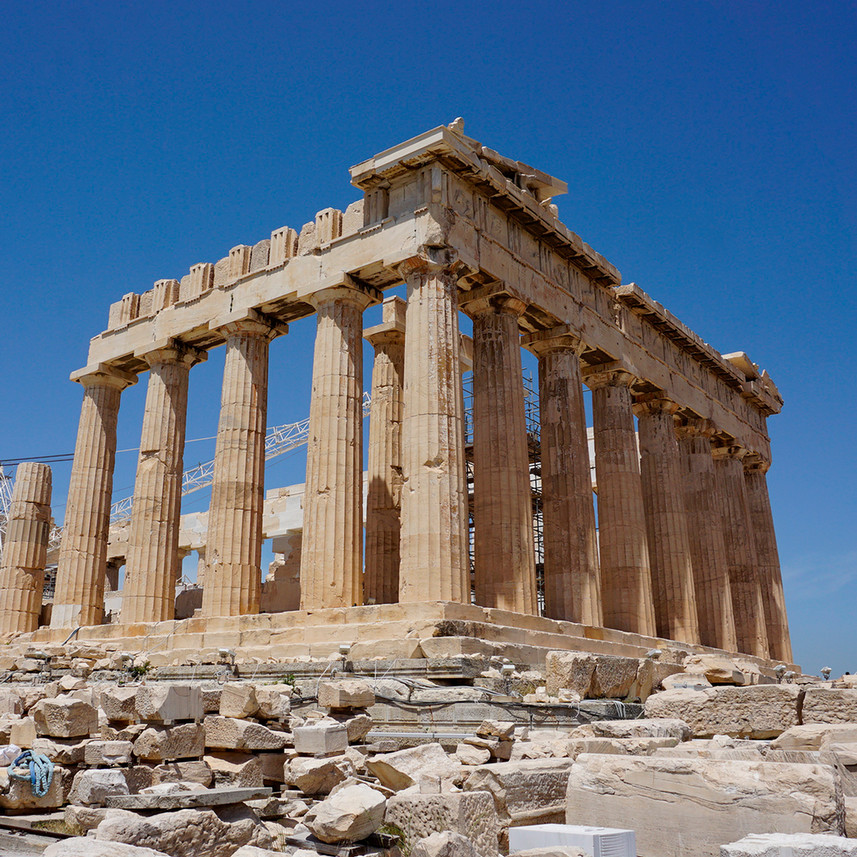
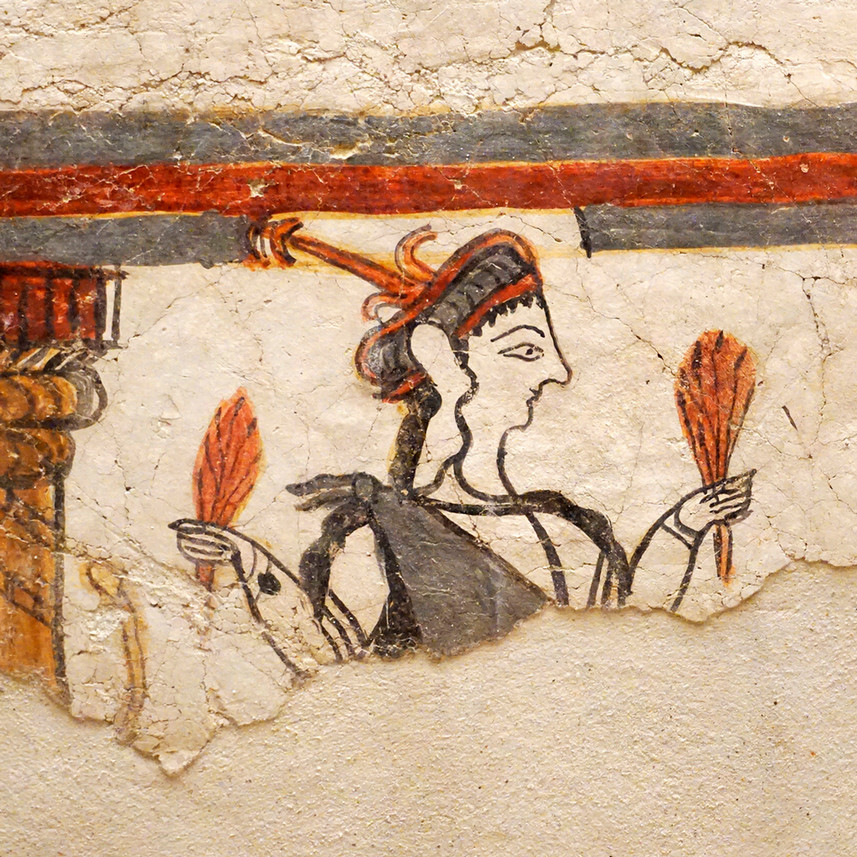
“The trip helped me fit my fragmented knowledge together. I understand now how the history fits with local geography, how myths informed culture and history.”
Friday, May 23
We’re on the move. We visit the Brauron archaeological site and sanctuary of Artemis, then stop for lunch in Lavrion and drive along the coast to Cape Sounion to visit the Temple of Poseidon. The temple sits high on a cliff above a remote beach — an infamously striking view for ancient ships on the ocean.
Here, Reece Steidle — who has three majors: creative writing, Latin, and classical civilizations — shows us where the Romantic English poet Lord Byron’s name was scratched into the Temple of Poseidon.
Saturday, May 24
Our final day of tours. We take a one-hour ferry to the Saronic island of Aegina to visit the Temple of Aphaea. We have a farewell dinner of sourdough bread with pickles and olives, a cheese pie with phyllo, vegetable briam with feta cream, baked fresh fish, and grilled chicken with risotto. And we reflect on the past 10 days.
Reece Steidle, ’27: “Seeing the things I had only heard of — walking around and feeling the impressiveness of the sites — helped me understand the impact they must have had on ancient Greeks. To read an inscription in the place it was originally written — not in a reprinted book 2,000 years removed — was truly fascinating.”
Walker: “The trip helped me fit my fragmented knowledge together. I understand now how the history fits with local geography, how myths informed culture and history.”
